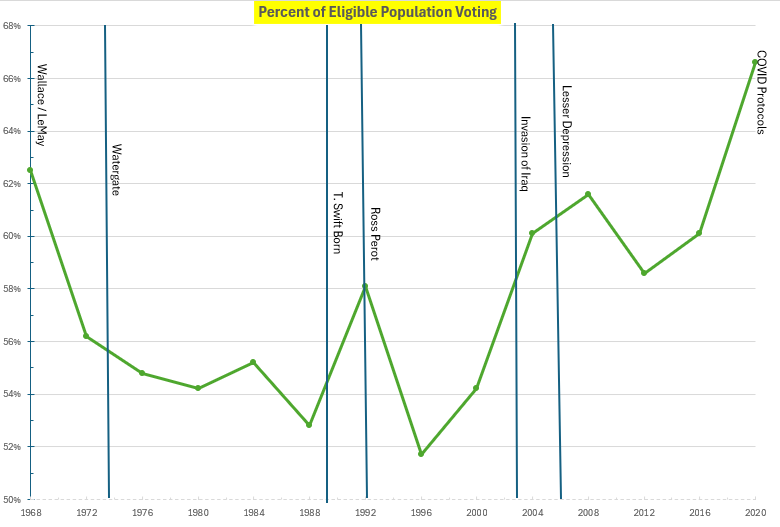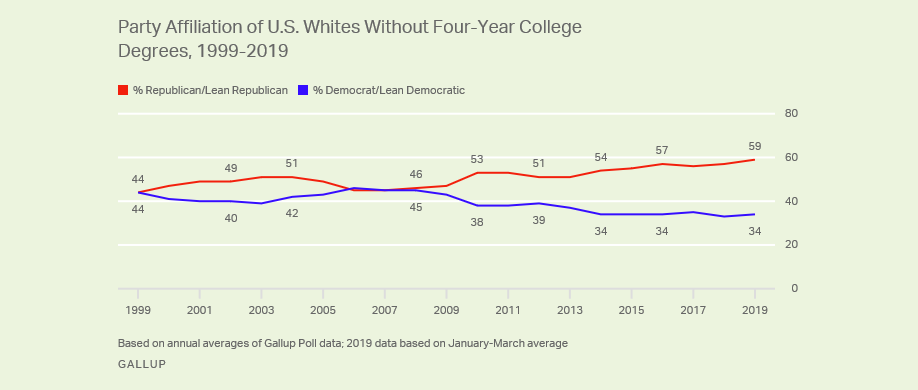If You Choose Not to Decide, You May be an American Restating the premise of my earlier post: Voting is an affirmative action. The more difficult voting is, the more turnout will be reduced. A voter in Oregon needs only to fill out and mail a ballot at any point over a period of time before an election. By contrast, some states allow voting only during certain hours on Election Day. Others may add a set of proscribed days and times before then, often only weekend time. Schedules need to be arranged, choices made. For example, in the time between that earlier post and now, Tammy Murphy has “suspended” her Senate campaign and endorsed Andy Kim. I’m be willing to bike through a little rain to vote for him, so I will probably vote in November. I
Topics:
Ken Houghton considers the following as important: 2024 election, 2024 voting, Intertemporal choice, politics
This could be interesting, too:
Robert Skidelsky writes Lord Skidelsky to ask His Majesty’s Government what is their policy with regard to the Ukraine war following the new policy of the government of the United States of America.
Joel Eissenberg writes No Invading Allies Act
Ken Melvin writes A Developed Taste
Bill Haskell writes The North American Automobile Industry Waits for Trump and the Gov. to Act
If You Choose Not to Decide, You May be an American
Restating the premise of my earlier post: Voting is an affirmative action. The more difficult voting is, the more turnout will be reduced. A voter in Oregon needs only to fill out and mail a ballot at any point over a period of time before an election. By contrast, some states allow voting only during certain hours on Election Day. Others may add a set of proscribed days and times before then, often only weekend time. Schedules need to be arranged, choices made.
For example, in the time between that earlier post and now, Tammy Murphy has “suspended” her Senate campaign and endorsed Andy Kim. I’m be willing to bike through a little rain to vote for him, so I will probably vote in November. I might, since I’m there anyway, even vote for a President. Consider that an 80% likelihood of voting. Multiply that “decision” by 3,000 similarly-inclined people, and you have an expectation of 2,400 more voters than you would have had if Ms. Murphy were the candidate.
American Voters are Rational
People are rational. They will jump through hoops to support someone when given a reason (see 2008), but we won’t all take a positive action just to oppose someone unless the other choice is attractive. As The Guardian recently discovered:
[A]n inadequate response to that movement at multiple levels of government beyond the White House, could permanently drive away some of the party’s base: progressive and younger voters. Many progressive voters have no interest in showing up purely to vote against Trump; unless they have a Democrat they really believe in, they’ll simply stay home.[emphasis mine]
The adjective “progressive” is pure blather; that reality crosses political positions. It’s just that “progressives” are Easy to Blame, especially among the “Classical Liberals.” (NOTE: Classical Liberal, like neo-Classical or neo-Keynesian economist, has absolutely no relation to their proclaimed forebearers.)
How To Increase Turnout: Motivate Voters
Indeed, as several of us have been pointing out since 2016, DJT got a lot of traditional non-voters to the polls. If the proportion of non-college educated white men voting in 2016 had been in line with previous Presidential elections, we might well be coming to the end of the Second Second Clinton Administration now. C’est la guerre.
Non-college educated white men have increasingly affiliated with the Republican Party since about 2008. As Jeffrey M. Jones noted in 2019, using Gallup survey data:
They didn’t turn out for John McCain, during the Little Depression. Willard Romney could not attract them either. As the Center for Immigration Studies documented in May of 2013:
If white turnout had been what it was in 2004, 4.7 million more of them would have voted. Of the 4.7 million whites who sat home on Election Day relative to 2004, 4.2 million did not have a bachelor’s degree.
They turned out for Trump in 2016. Again, Dave Chapelle tells you why:
A rational political party would approach an increase in turnout by their major opposition by motivating their voters to turn out. As any good businessperson knows, it’s much more expensive to add a new customer than it is to encourage a previous one to come back. “Vote for us; we’re not so evil” alone will not motivate voters affirmatively, even when you’re not the incumbent.
Testing the Theory
The election of 2020 was a natural test of the affirmative action theory. Non-Oregonians voted by mail, people could drop-off ballots early, and early voting was generally much more available than usual. Turnouts set records. As I noted previously:
[A]bout 27,500,000 more people voted in 2020 than in 2016. Basically an 11% increase, with voter participation going from just over 60% to 66.6%, the highest total since well before American women were legally allowed to vote. (The turnout for 2008 was, until 2020, the highest of the post-Watergate era. The people did not let a crisis go to waste.)

Summary
So let’s be realistic. There are not going to be 155MM+ votes cast in the 2024 Presidential election. People might wish that were not so, but the motivations aren’t there and the processes will be more difficult.
The apparent tautology of “Trump voters love Trump” abides; non-college educated white males may turn out in force, relative to their pre-2016 voting patterns, but even their total, and possibly their percentage, will drop from 2020. They won’t all vote for Trump, of course, but that’s like saying Not All Jews or Blacks or College-Educated Women will vote for Biden. The question is how many, at the margin, will decide not to vote.
How many people, at the margin, are motivated enough to overcome the obstacles and affirmatively vote for a candidate or an issue. In the time between my previous post and this one, Florida put abortion on the ballot. In the time I spent writing this yesterday, the venal, radical Arizona Supreme Court may well have ensured that Ruben Gallego will be elected Senator, which suggests the Democratic Presidential candidate may be able to keep that state in his Electoral College column. Give people a reason to vote, or make it easier to do so, and more people will do it. Ask the state of Ohio.
Voting in the 2024 Presidential election will be more difficult, save in Oregon. The duty of the Party is to give people reasons to vote for their candidate. The Party that does that best, in the context of the Electoral College, is the party more likely to win the election.

